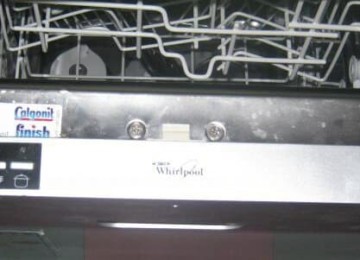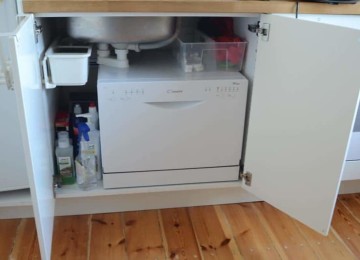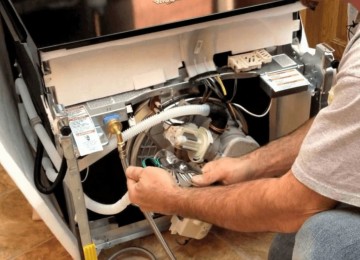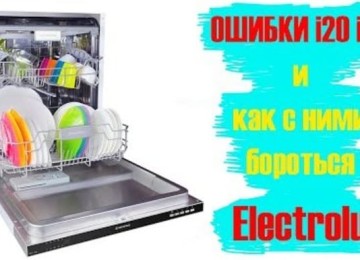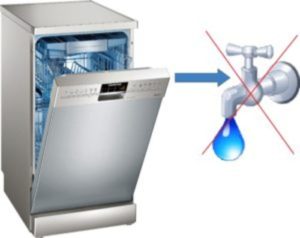 It is no secret that a person quickly gets used to good things, and when there are dishwashing machines in an apartment, there is a desire to buy the same unit and install it in a country house. There is only one obstacle - the lack of all the benefits that civilization has given. The problem is that without a centralized supply of water, such equipment does not work, and this raises two questions at once: is there an autonomous dishwasher for a dacha without running water? How to properly connect it?
It is no secret that a person quickly gets used to good things, and when there are dishwashing machines in an apartment, there is a desire to buy the same unit and install it in a country house. There is only one obstacle - the lack of all the benefits that civilization has given. The problem is that without a centralized supply of water, such equipment does not work, and this raises two questions at once: is there an autonomous dishwasher for a dacha without running water? How to properly connect it?
Do they make autonomous dishwashing machines?
Today the market for household appliances offers a large number of devices, among which you need to choose the best option for an autonomous dishwasher. It turns out that everything is not so complicated.
The fact is that the range of machines operating autonomously is not so extensive. Yes, and they are considered machines conditionally, most often classified as devices.
Examples include Cicro and No Strom Eco Wash Dinner Set. These portable dishwashers are able to work not only without a centralized water supply, but also without electrical energy.
The main advantages of the models are considered to be saving energy resources and washing without hands.This is where the advantages end, and the negative features begin:
- Such autonomous machines are quite expensive, their implementation is limited by the small number of devices;
- the capacity of the washing chambers is small;
- you will have to have a supply of warm water in cans to constantly refill the machine. In addition, draining dirty liquid is also done manually;
- The quality of washing is at an average level.
In general, everything is very clear. It turns out that full dishwasher such autonomous technology will never replace.
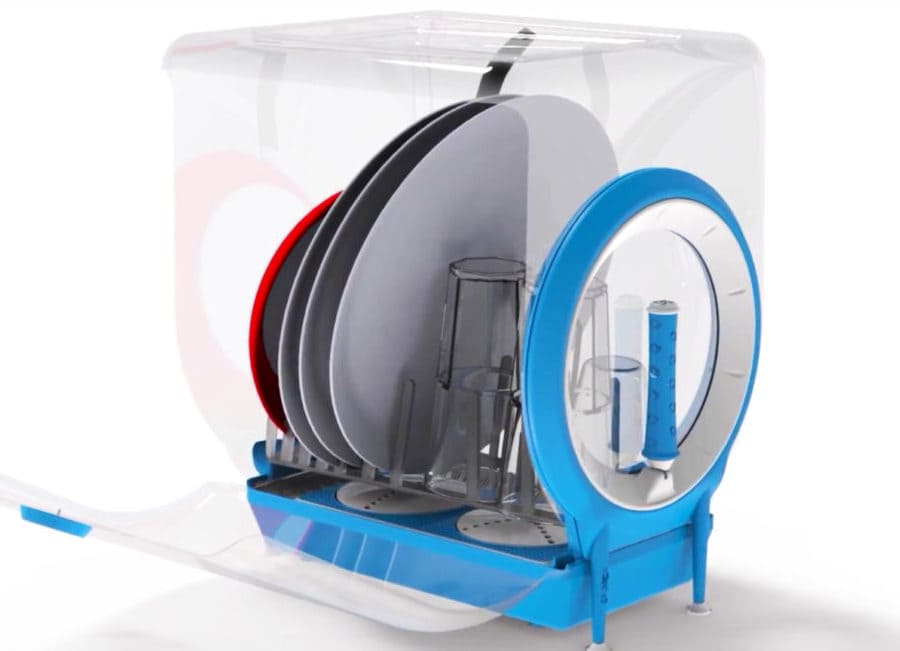
Device Features
Structurally, such a machine is a device with a water tank located on top. Dirty dishes are placed in the washing tank, water is added from a canister or other container, and detergent is added. There is a handle on the side that you need to turn. Due to mechanical rotation, dishes are washed and rinsed. After this, you should wait for some time until the water drains and the dishes can be removed.
Making the right choice
In order for the dishwasher to operate without a constant supply of water, it needs to create a pressure of the supplied liquid into the storage tank under a pressure varying between 0.03 - 1 MPa. As you can see, it doesn’t matter at all what model of dishwasher you use - autonomous or stationary, the main thing is that good quality water is supplied at a certain pressure.
Therefore, you can purchase any washing mashine model for washing dishes, filter the water, pour it into a plastic container, which is then connected to the dishwasher.
Algorithm of actions for connecting an autonomous machine
An unusual and fairly simple method has been developed to force dishwashers to function without running water. Note that large quantities of consumables are not required to make it a reality.
To implement your plan, you need to prepare:
- a suitable container that can hold at least ten liters of water and has a tight-fitting lid. This amount of liquid is quite enough to wash the dishes in the washing compartment;
- threaded fitting, nut, rubber band for sealing gasket;
- valve from a tubeless tire;
- one and a half meter long hose;
- a pair of clamps, winding, sealant for washing mashine tires;
- metal corners, a board 3 cm thick and 8 cm long;
- automobile compressor;
- 18 A charging and pre-start device.
Having collected everything you need for installation, we proceed to installation. dishwasher. To begin with, select a place for its installation. As a rule, it is located in a corner or against a wall, in close proximity to an electrical outlet.
A little higher than the body of the machine and a little to the left we attach corners to the wall, on which we lay a board horizontally to create a shelf. We make a hole in the lid of the water container, fix the tubeless valve in it, and coat the joints with sealant.
Now we make a hole in the bottom of the container, fasten the fitting with the thread directed into the container, put in a gasket, and tighten the fitting with a nut from inside the container. A hose is put on it from the outside and secured with a clamp. The hose is connected to the inlet valve of the dishwasher. The main condition is to make all connections hermetically to prevent water leaks.
Water suitable for washing is carefully poured into the container and the lid is screwed on. Now the container should be placed on the shelf.
All that remains is to remove the compressor hose and turn on the dishwasher, which will work in autonomous mode. If the device begins to draw water, everything goes fine. Otherwise, the pressure will have to be increased by using the compressor again.
Do not forget that the washing mashine will have to drain the dirty liquid. Some summer residents install a septic tank and connect a sewer pipe to the house, thereby creating an entire system. You can solve the issue more simply - place the drain hose in an empty container, the contents of which are then poured outside.
Conclusion
We can conclude that there are almost no autonomous industrial dishwashers, but each device can be made to perform its duties without a constant water supply. You will have to use your wits and work a little, but at the dacha you will no longer waste precious time washing dirty dishes.






